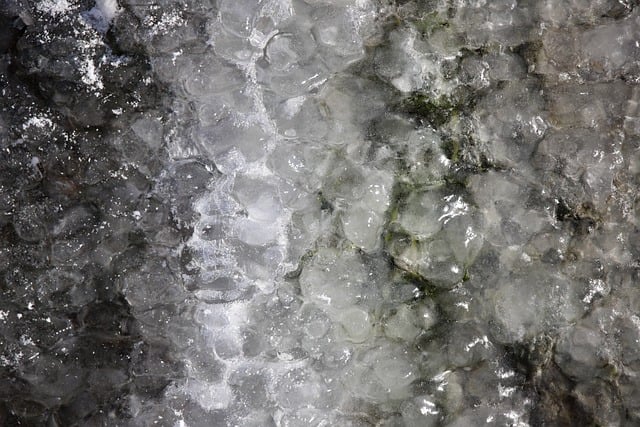Cold Therapy Revolutionizes Migraine Management: Scientific research highlights the effectiveness of cold therapy, including ice packs and advanced methods like cryotherapy and cold water immersion, in alleviating migraine pain. By reducing inflammation, constricting blood vessels, and blocking pain signals through cooling techniques, these methods offer instant and lasting relief. Regular use can also prevent migraines. As easily accessible options, cooling techniques present promising, game-changing strategies for migraine sufferers seeking control over their condition.
Headaches and migraines can be debilitating, but targeting these pains with localized cold applications offers a promising solution. This article explores the effectiveness of cold therapy for migraine relief, delving into various methods like ice packs, cryotherapy, and water immersion. We uncover the science behind these techniques, highlighting their benefits in managing migraine pain effectively. Discover how simple cooling strategies can provide natural and targeted relief from intense headaches.
Understanding Head Pain and Cold Therapy
Head pain, especially migraines, is a common and often debilitating condition that affects millions worldwide. While the exact causes are multifaceted, involving genetic predisposition, environmental triggers, and neurovascular changes, managing symptoms effectively is crucial for maintaining quality of life. Cold therapy has emerged as a game-changer in this realm, with numerous scientific studies backing its benefits.
Cold therapy for migraines, including applications like ice packs or cryotherapy sessions, leverages the body’s natural response to cold stimuli. When applied locally to the head and neck areas, cold compresses can significantly reduce inflammation and constrict blood vessels, offering effective migraine pain relief. Techniques such as cold water immersion and targeted cooling have shown promise in not only alleviating acute migraine attacks but also preventing recurring episodes. By utilizing these simple yet powerful cooling techniques, individuals can gain more control over their headaches and improve overall well-being.
Ice Packs and Their Role in Migraine Relief
Ice packs and their role in migraine relief cannot be overstated. Cold therapy for migraines is a well-established method that utilizes the cooling effects of ice to significantly reduce pain and inflammation associated with headaches, especially migraines. The application of an ice pack or cold compress can provide instant relief by constricting blood vessels and reducing nerve sensitivity in the affected area. This simple yet effective treatment can be easily administered at home, making it a popular choice for those seeking immediate migraine pain relief without medication.
Beyond traditional ice packs, cryotherapy for migraines involves more intense cold water immersion, which has been shown to have additional benefits. Some people find that submerging affected areas in icy water for short periods can offer prolonged relief and even prevent future migraines. Cooling techniques for headaches, when used strategically, can be game-changers for managing this debilitating condition. The key lies in the consistent application of cold at the onset or during an attack to interrupt the pain signal and reduce inflammation.
Advanced Cold Treatment Methods: Cryotherapy and Water Immersion
In recent years, advanced cold treatment methods have emerged as powerful tools in the battle against head pain, particularly migraines. Cryotherapy involves brief exposure to extreme cold, often in a cryochambers or through localized applications of ice, which has been shown to significantly reduce inflammation and block pain signals. This rapid cooling can provide almost immediate migraine pain relief by constricting blood vessels and slowing nerve impulses.
Another innovative technique gaining traction is water immersion, where individuals submerge themselves in cold water for a specific period. This method leverages the benefits of cold therapy while also offering the added advantage of hydrostatic pressure, which can further alleviate head pain and reduce muscle tension. Studies suggest that regular practice of these cooling techniques can offer lasting relief and even prevent migraines from occurring by regulating the body’s natural response to pain. For those seeking effective migraine relief, integrating cold compresses or exploring cryotherapy and cold water immersion could be valuable additions to their wellness regimen.
The Science Behind Cooling Techniques for Effective Headache Management
The Science Behind Cooling Techniques for Effective Headache Management
Cooling techniques, such as applying ice packs or immersing oneself in cold water, have gained significant attention as alternative remedies for managing headaches, especially migraines. The concept behind cold therapy for migraines is based on the principle that cooling the body can interrupt pain signals sent to the brain, effectively reducing inflammation and constricting dilated blood vessels often associated with migraine pain. When an ice pack or a cold compress is applied to the head or neck area, it causes vasoconstriction, narrowing the blood vessels and reducing blood flow to the affected region, which can help alleviate pressure and pain.
Moreover, cryotherapy for migraines involves short periods of exposure to extreme cold, such as cold water immersion or ice baths. This method is believed to stimulate the release of endorphins, the body’s natural painkillers, providing long-lasting migraine pain relief. The benefits of cold compress for headaches extend beyond acute relief; regular use can also help prevent migraines by reducing the frequency and severity of attacks. In terms of migraine treatment, cold therapy offers a non-invasive, easily accessible option with potential game-changing effects for folks suffering from these debilitating headaches.
In conclusion, targeting head pain with localized cold applications offers a promising avenue for relief, especially in the form of cold therapy for migraines. Techniques such as using ice packs, cryotherapy, and cold water immersion have shown significant benefits in mitigating migraine pain and managing headaches. The science behind these cooling techniques underscores their effectiveness in reducing inflammation and slowing nerve impulses, providing sustainable migraine relief. Incorporating these methods into personal care routines can offer folks a natural, accessible way to navigate and overcome debilitating head pain.
